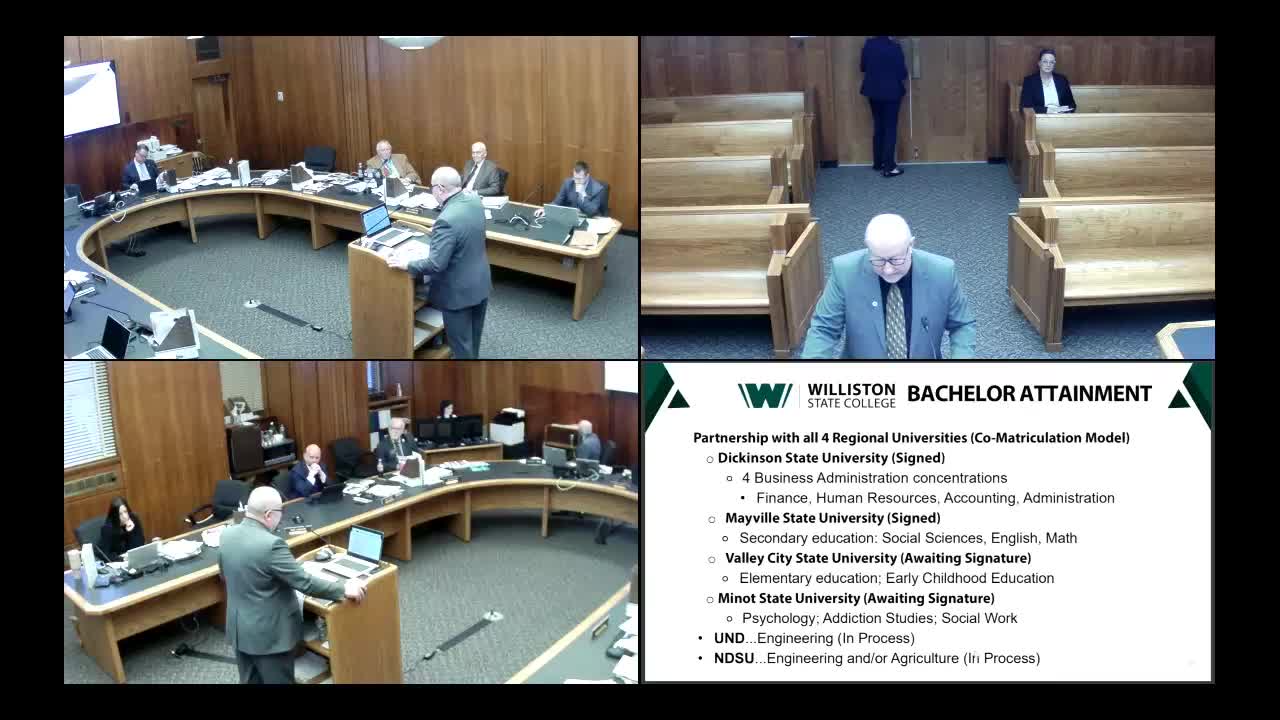TrainND Northwest celebrates training success while facing funding challenges in North Dakota
March 11, 2025 | Appropriations - Education and Environment Division, House of Representatives, Legislative, North Dakota
This article was created by AI summarizing key points discussed. AI makes mistakes, so for full details and context, please refer to the video of the full meeting. Please report any errors so we can fix them. Report an error »

The North Dakota House Appropriations Committee focused on education and workforce training during its meeting on March 11, 2025, highlighting significant growth in enrollment and financial challenges ahead.
One of the key points discussed was the impressive enrollment growth of 16% and 21% in various educational initiatives, despite the fact that new programs have yet to be implemented. This growth signals a strong demand for educational services in the region, with stakeholders expressing optimism about future opportunities as new initiatives are rolled out.
The committee also addressed the financial landscape of local educational institutions. Deb Halverson, a representative from Williston State College, presented an overview of the college's revenues, noting that state appropriations account for approximately $6.1 million, or 30% of total revenues. Tuition and scholarships contribute another $3 million, indicating a reliance on both state support and student enrollment for funding.
A significant concern raised was the timing of state funding, which is projected to begin in 2029. This delay poses a challenge as the college anticipates further enrollment growth, which will not be matched by immediate funding increases. Halverson explained that every 5% increase in enrollment could yield an additional $150,000 in tuition revenue, alongside $325,000 in future state funding. However, the gap between growing needs and available funding could hinder the institution's ability to support its expanding student body.
The meeting also touched on the success of the TrainND Northwest program, which trained over 600 individuals in FY 2024, primarily in the mining and oil sectors. This program has proven to be financially self-sustaining, generating revenues between $2 to $4 million annually with minimal state funding.
As the committee concluded, the discussions underscored the importance of addressing funding gaps to support the growing educational demands in North Dakota. The anticipated growth in enrollment and the need for timely financial support will be critical as the state moves forward in enhancing its educational and workforce training initiatives.
One of the key points discussed was the impressive enrollment growth of 16% and 21% in various educational initiatives, despite the fact that new programs have yet to be implemented. This growth signals a strong demand for educational services in the region, with stakeholders expressing optimism about future opportunities as new initiatives are rolled out.
The committee also addressed the financial landscape of local educational institutions. Deb Halverson, a representative from Williston State College, presented an overview of the college's revenues, noting that state appropriations account for approximately $6.1 million, or 30% of total revenues. Tuition and scholarships contribute another $3 million, indicating a reliance on both state support and student enrollment for funding.
A significant concern raised was the timing of state funding, which is projected to begin in 2029. This delay poses a challenge as the college anticipates further enrollment growth, which will not be matched by immediate funding increases. Halverson explained that every 5% increase in enrollment could yield an additional $150,000 in tuition revenue, alongside $325,000 in future state funding. However, the gap between growing needs and available funding could hinder the institution's ability to support its expanding student body.
The meeting also touched on the success of the TrainND Northwest program, which trained over 600 individuals in FY 2024, primarily in the mining and oil sectors. This program has proven to be financially self-sustaining, generating revenues between $2 to $4 million annually with minimal state funding.
As the committee concluded, the discussions underscored the importance of addressing funding gaps to support the growing educational demands in North Dakota. The anticipated growth in enrollment and the need for timely financial support will be critical as the state moves forward in enhancing its educational and workforce training initiatives.
View full meeting
This article is based on a recent meeting—watch the full video and explore the complete transcript for deeper insights into the discussion.
View full meeting
